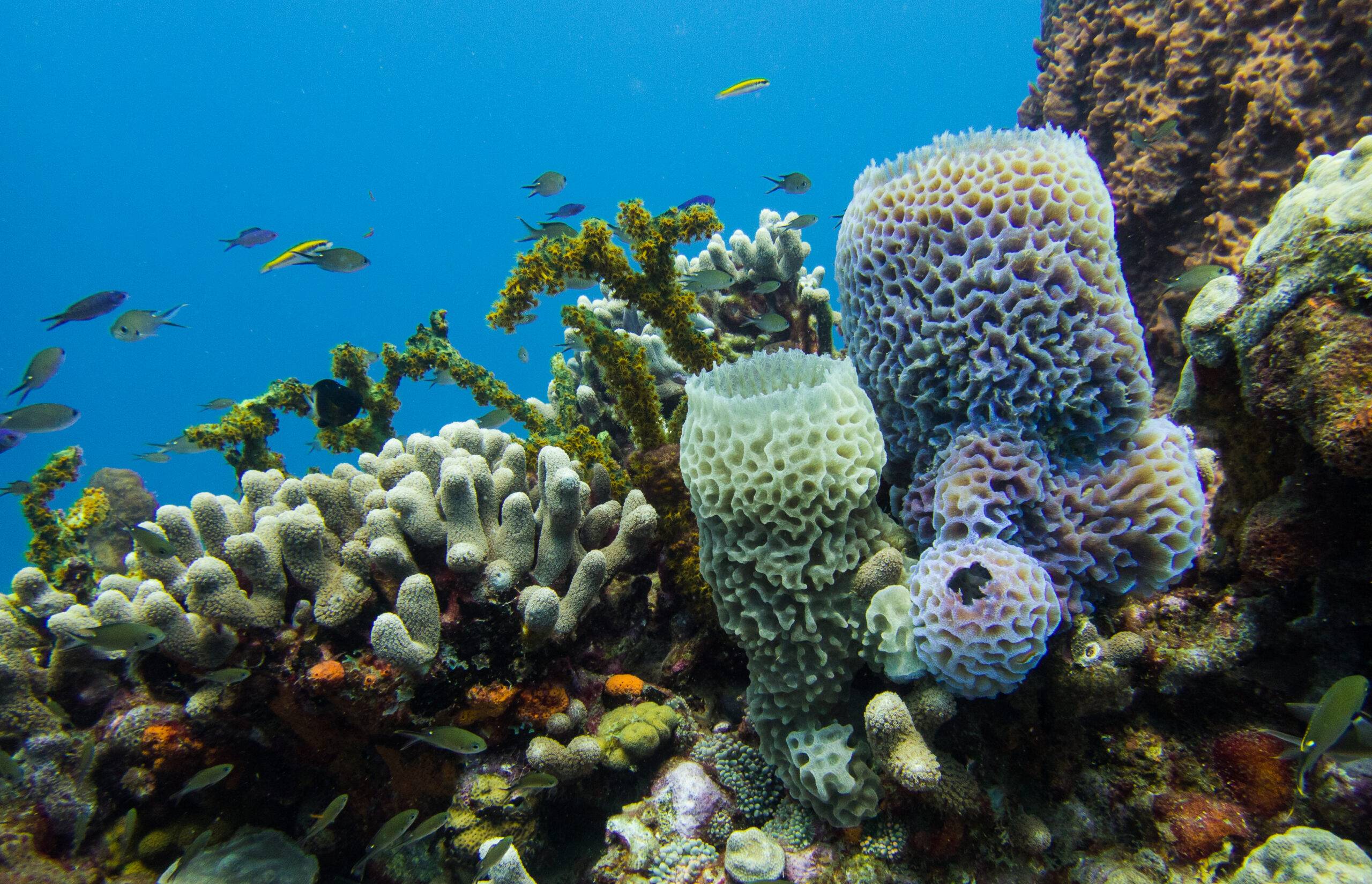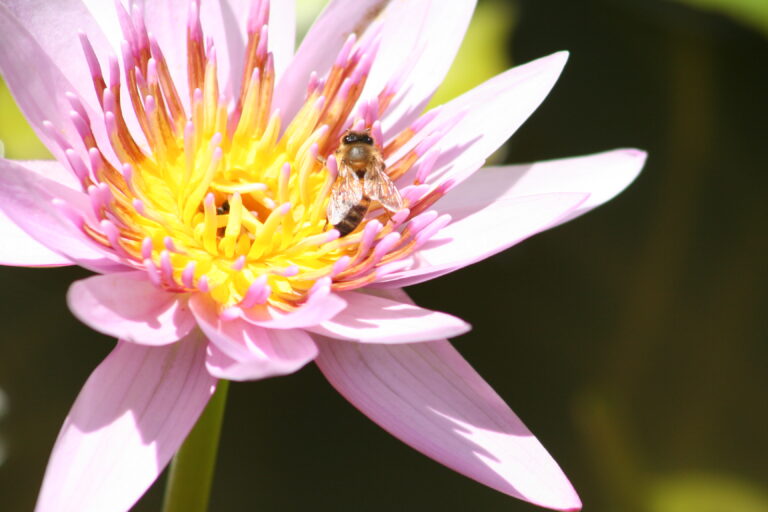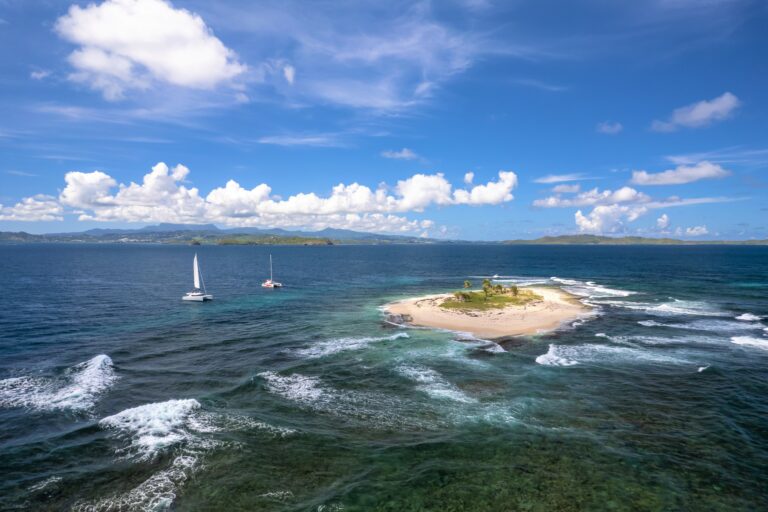Discovering the marine ecosystems of Martinique
En Martinique, le milieu marin est composé de trois écosystèmes majeurs, les coraux, les herbiers et les mangroves, qui jouent un rôle insoupçonné dans la préservation des côtes de l’île, ainsi que de sa faune et de sa flore sous-marines. Préserver ces écosystèmes marins est donc essentiel ! Nous vous expliquons le pourquoi du comment.
The coral reef
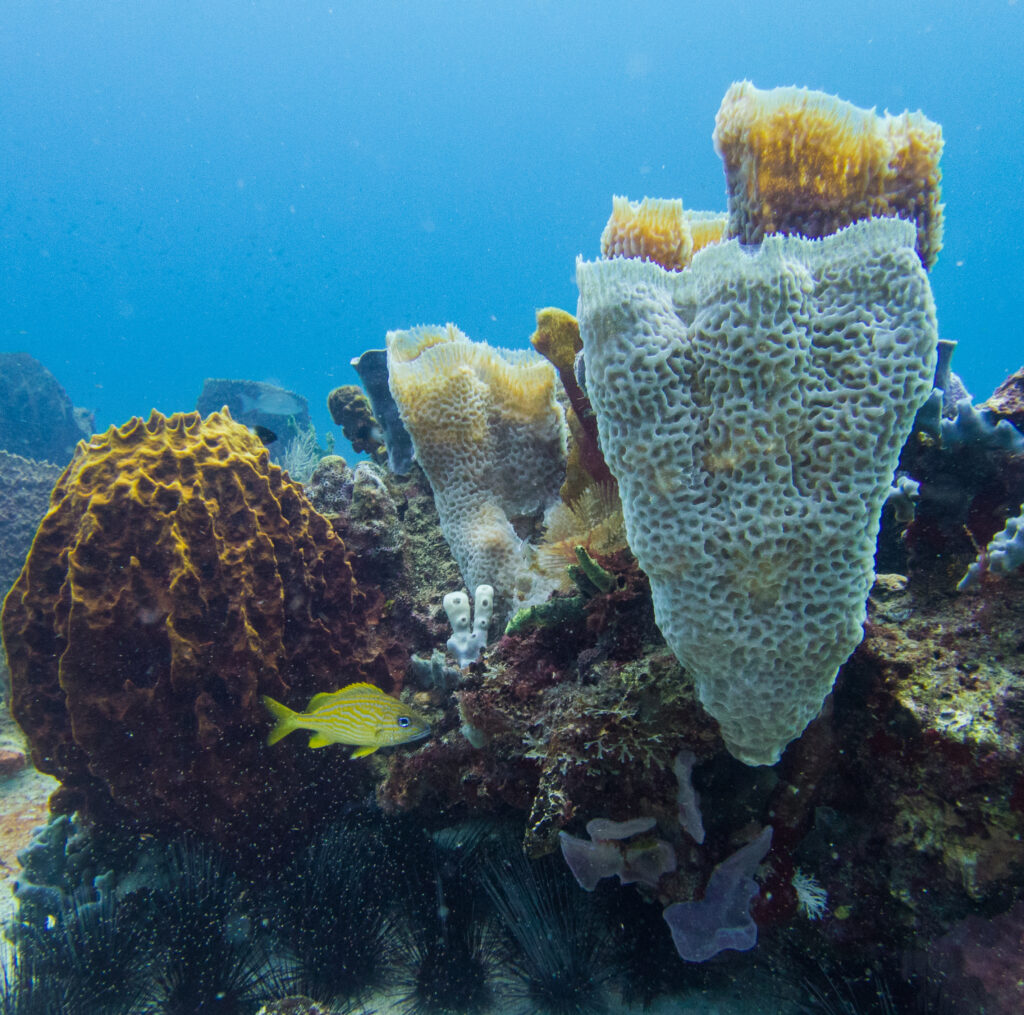
Let's start with the coral reef. Also known as a coral reef, it is a collection of corals that together form a natural structure. If it is so easy to observe corals in Martinique, while snorkeling, diving or on a boat, it is because they develop mainly in warm tropical waters and at a shallow depth, at a maximum of twenty meters underwater, in order to capture enough light.
La lumière est ainsi essentielle pour les coraux. Pourquoi ? Car les coraux sont en réalité des animaux -appelés polypes-, qui vivent en symbiose avec une micro-algue -la Zooxanthelle-, qui nourrit le polype par le biais de la photosynthèse. Et pour la petite histoire, ce sont ces Zooxanthelles qui procurent aux récifs coralliens leurs diverses couleurs chatoyantes en utilisant l’énergie solaire lors de la photosynthèse.
Beyond access to light, other elements are essential for the proper development of tropical corals:
- Clear water, so that you can enjoy good light
- Oxygenated water to ensure the survival of micro-algae
- Warm water, between 24°C and 29°C, the ideal temperature for coral calcification and reproduction
All this being said, the reason why coral reefs are so important is that they are home to a varied fauna and flora made up of multiple species of fish, sponges, anemones and gorgonians. Their disappearance would therefore be synonymous with real upheaval in the ecosystem that they shelter.
And that's not all: by breaking the swell from the open sea, coral reefs protect the seagrass beds and mangroves that only develop in calm water. We will tell you more about the importance of these two marine ecosystems in the following.
Understanding the link between global warming and coral death:
Global warming is responsible for the increase in ocean temperatures and the rise in sea level. However, when water temperatures exceed 29°C, the micro-algae cohabiting with the polyps are no longer able to carry out the photosynthesis that is essential for coral development. The corals then expel the Zooxanthellae and reveal their white calcareous structure, hence the coral bleaching phenomenon you have no doubt heard about. Without these micro-algae, however, the polyps are no longer able to feed themselves and perish.
Herbarium
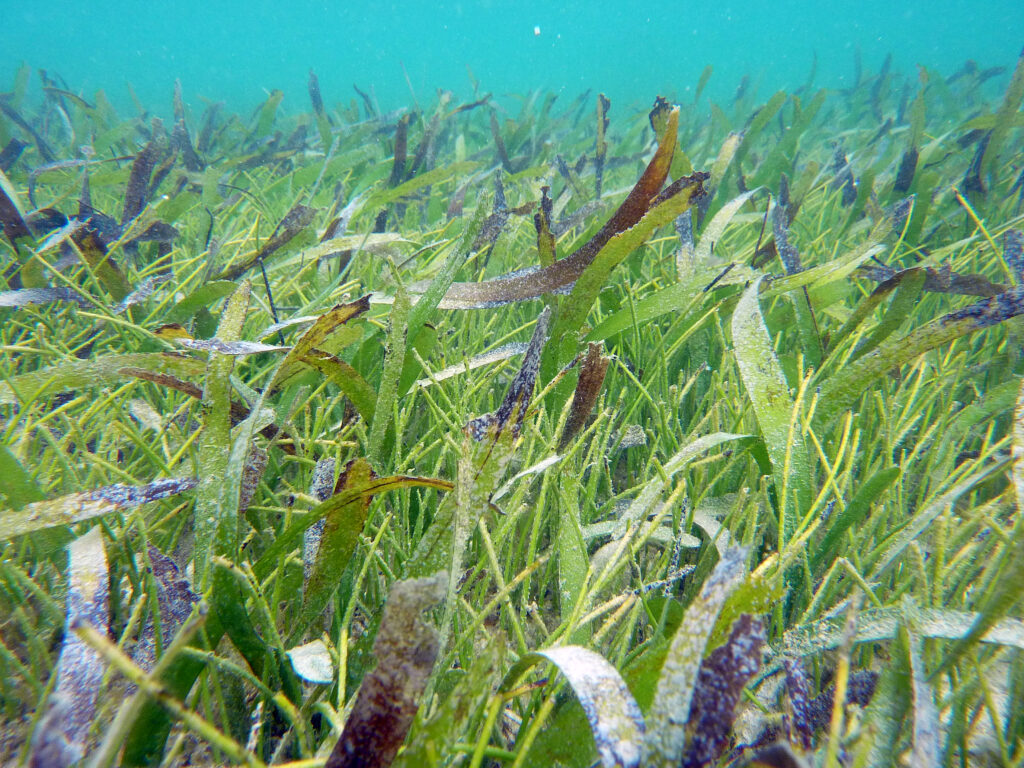
Comme nous vous le disions plus haut, les récifs coralliens permettent de préserver les herbiers, ces prairies de plantes sous-marines également essentielles au bon fonctionnement du milieu marin en Martinique.
Les herbiers servent ainsi de nourriture à différents brouteurs des mers, tels que les tortues qui sont une espèce protégée (!), certains poissons, les oursins, les étoiles de mer et les lambis, ainsi que les concombres de mer ou Holothuries, véritables nettoyeurs des sables. Mais ils permettent également d’assurer l’oxygénation des eaux dans lesquels ils évoluent, de capturer le carbone océanique, de ralentir les courants et donc de limiter l’érosion littorale, ainsi que de piéger les sédiments grâce à leurs racines. Et l’intérêt est double : empêcher aux sédiments d’étouffer les coraux d’une part, et offrir un substrat de choix pour le développement de la flore littorale d’autre part.
Le mouillage à l’ancre, le défaut d’assainissement des eaux rejetées sur le littoral et le piétinement sont autant de menaces pour les herbiers, qui sont un écosystème indispensable du littoral martiniquais et du milieu marin en général. C’est pour cela qu’il est essentiel de privilégier les fonds sableux pour jeter l’ancre et de préférer les bouées lorsqu’elles sont disponibles, pour mouiller au-dessus des herbiers.
The mangrove
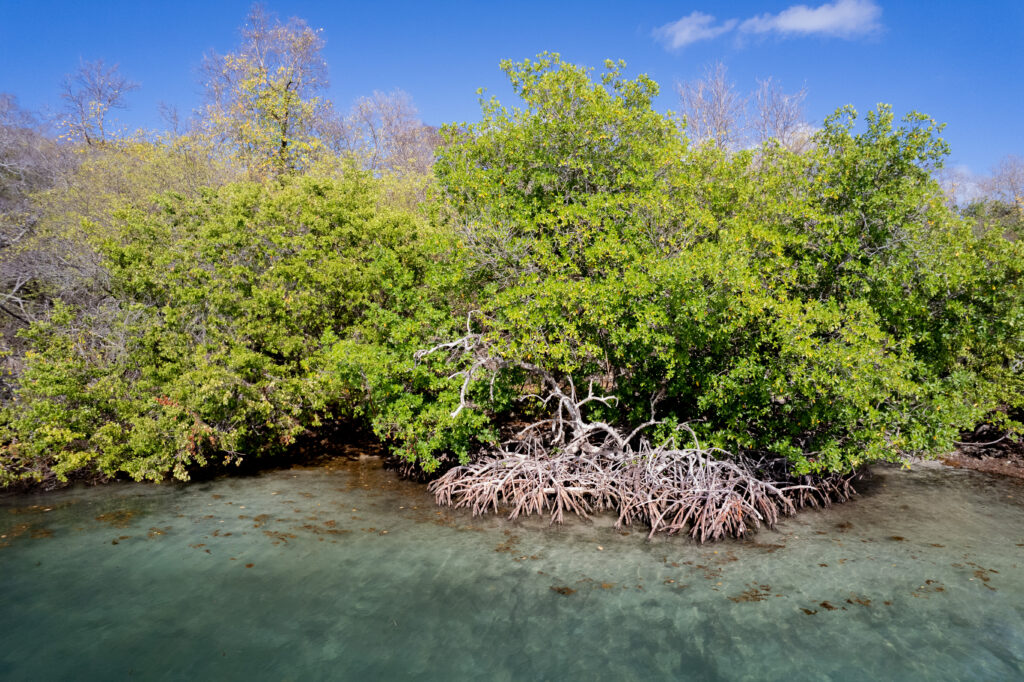
Mangroves are forests that grow between land and sea in brackish water, a mixture of fresh and salt water. Mangrove trees are able to grow in this environment because their aerial roots, like stilts, are able to filter the salt from the sea water and oxygenate themselves in the open air.
For the botanical minute, it is important to know that it is actually the red mangroves that can be seen on the edge of the mangrove. In the back of the mangrove, where there is less water, it is the black mangrove that takes precedence, anchored in the mud; and in the dry zone on dry land, it is the grey and white mangroves that can be found.
What is important to remember is that the preservation and protection of mangroves is essential, as these ecosystems provide invaluable ecological services for both the seabed and the coastline.
Mangroves are real nurseries allowing juvenile fish to develop sheltered from currents and large predators. Once they are ready to set sail, they can then feed in the grass beds and join the coral reefs. Many species of crabs, molluscs, birds and rodents nest in the mangroves.
Thanks to the skilful intertwining of the stilt roots of the mangroves along the coast, mangroves are also able to absorb swell and thus protect the coast from erosion and submersion due to cyclones or even tsunamis.
It should be noted that they also trap sediments and pollution from the land, thus preserving corals, sea grass beds and their species. Finally, like all forests, mangroves trap CO2, a significant asset in the fight against global warming.
The coral reef therefore protects the seagrass beds, which themselves play an essential role for the mangroves, which in turn preserve the seagrass beds and allow many species to develop in complete safety. The good health of this mangrove-grass-coral reef triptych is therefore a determining factor for rich and lively seabeds: an asset for both fishing and leisure activities - diving, snorkelling, sailing - provided that they are always respectful of these precious marine ecosystems.
Profitez de balades en mer écoresponsables en Martinique avec les excursionnistes Voile Nature !
Article written by : Axelle DORVILLE

